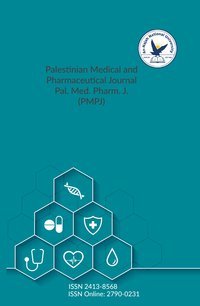Stability Indicating Validated Novel RP-HPLC Method for Dexlansoprazole and LC-MS/MS Study of Degradation Product
Article info
2023-04-29
2023-06-03
2024-03-01
81 - 106
Keywords
- Validation
- Stability Indicating
- Dexlansoprazole
- LC-MS/MS.
- HPLC
Abstract
This work effectively developed and validated a stability-indicating RP-HPLC technique for precisely measuring dexlansoprazole in bulk samples. An Acetonitrile and 0.5 mmol Ammonium Acetate (pH 4.5) gradient mobile phase, a 1 ml/min flow rate, and detection at 283 nm were all part of the method's unique chromatographic conditions. A Kromasil C18 column was also used. Dexlansoprazole had a 5.14-minute retention period, and the tech-nique showed a linear range of 5–30 mg/ml with a strong correlation value of 0.997. The technique showed high sensitivity with a limit of detection (LOD) of 1.2 mg/ml and a limit of quantification (LOQ) of 3.64 mg/ml. The accuracy of the approach was shown by the per-centage recovery of dexlansoprazole, which varied from 98.6% to 102%. The International Council for Harmonisation (ICH) gave standards for validating the created approach, which were followed. It covered several variables: linearity, LOD, LOQ, accuracy, precision, ro-bustness, and solution stability. The technique demonstrated stability and the capacity to successfully separate the degradation products from the analyte peaks, establishing its validi-ty as a stability-indicating technique. LC-MS/MS spectra were also used to establish the degradants' structures.The quantitative measurement of dexlansoprazole in bulk form may be accomplished effectively using this established RP-HPLC technique. It is a useful instru-ment for quality control and stability evaluation of dexlansoprazole in pharmaceutical for-mulations because of its accuracy, precision, and stability-indicating capabilities.
Stability Indicating Validated Novel RP-HPLC Method for Dexlansoprazole and LC-MS/MS Study of Degradation Product
معلومات المقال
2023-04-29
2023-06-03
2024-03-01
81 - 106
الكلمات الإفتتاحية
- Validation
- Stability Indicating
- Dexlansoprazole
- LC-MS/MS.
- HPLC
الملخص
This work effectively developed and validated a stability-indicating RP-HPLC technique for precisely measuring dexlansoprazole in bulk samples. An Acetonitrile and 0.5 mmol Ammonium Acetate (pH 4.5) gradient mobile phase, a 1 ml/min flow rate, and detection at 283 nm were all part of the method's unique chromatographic conditions. A Kromasil C18 column was also used. Dexlansoprazole had a 5.14-minute retention period, and the tech-nique showed a linear range of 5–30 mg/ml with a strong correlation value of 0.997. The technique showed high sensitivity with a limit of detection (LOD) of 1.2 mg/ml and a limit of quantification (LOQ) of 3.64 mg/ml. The accuracy of the approach was shown by the per-centage recovery of dexlansoprazole, which varied from 98.6% to 102%. The International Council for Harmonisation (ICH) gave standards for validating the created approach, which were followed. It covered several variables: linearity, LOD, LOQ, accuracy, precision, ro-bustness, and solution stability. The technique demonstrated stability and the capacity to successfully separate the degradation products from the analyte peaks, establishing its validi-ty as a stability-indicating technique. LC-MS/MS spectra were also used to establish the degradants' structures.The quantitative measurement of dexlansoprazole in bulk form may be accomplished effectively using this established RP-HPLC technique. It is a useful instru-ment for quality control and stability evaluation of dexlansoprazole in pharmaceutical for-mulations because of its accuracy, precision, and stability-indicating capabilities.
An-Najah National University
Nablus, Palestine
Nablus, Palestine
- P.O. Box
- 7, 707
- Fax
- (970)(9)2345982
- Tel.
- (970)(9)2345560
- (970)(9)2345113/5/6/7-Ext. 2628
- [email protected]
- EIC
- Prof. Ismail Warad
